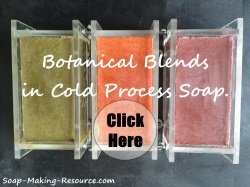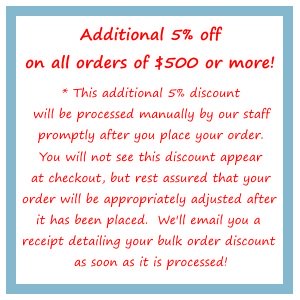Soybean Oil for Soap Making
Some individuals like what using soybean oil for soap making adds to their finished product. Others use this ingredient as an inexpensive filler oil in an attempt to cut their soaping costs.
There are two types of soybean oil that can be used for soap making... hydrogenated and non-hydrogenated. Hydrogenated soybean oil will be harder and has a different fatty acid makeup then the non-hydrogenated type. The characteristics added to your soap will be different depending on which type you use but the SAP values will remain the same.
Here are the approximate fatty acid, iodine, and SAP values for non-hydrogenated soybean oil:
| Lauric | 0% |
| linoleic | 50% |
| linolenic | 8% |
| Oleic | 24% |
| Palmitic | 11% |
| Ricinoleic | 0% |
| stearic | 5% |
| myristic | 0% |
| Iodine Value | 131 |
| SAP Value Sodium Hydroxide | .136 |
| SAP Value Potassium Hydroxide | .191 |
Here are the approximate fatty acid, iodine, and SAP values for hydrogenated soybean oil:
| Lauric | 0% |
| linoleic | 7% |
| linolenic | 1% |
| Oleic | 41% |
| Palmitic | 9% |
| Ricinoleic | 0% |
| stearic | 15% |
| myristic | 0% |
| Iodine Value | 78 |
| SAP Value Sodium Hydroxide | .136 |
| SAP Value Potassium Hydroxide | .191 |
When using soybean oil for soap making, here are the characteristics that will be displayed in your soap:
| Bubbly lather | No |
| Creamy/Stable lather | Yes |
| Cleansing | Mild |
| Conditioning | Yes |
| Hardness | No |
You will see slight differences in your soap depending on which type of soybean oil you use. Liquid (non-hydrogenated) soybean oil will offer better conditioning properties but a bit less of a lather then the hydrogenated type.
I consider soybean oil to be somewhat of a neutral when it comes to soap making. There are no overwhelming qualities that it offers and its skin care benefits are negligible, being neither bad nor good for your complexion. So what makes this ingredient appealing? One word: Price.
Soybean oil is a great ingredient to use to cut down your soaping costs while avoiding the use of ingredients that will affect the quality of your product. As long as you add plenty of other beneficial oils to the batch, and you don't allow soybean oil to take up too high of a percentage of your oils, the soap will turn out just fine and will be wonderful for the skin.
|
Sign Up Today!
*Your information is SAFE with us! |
Furthermore, hydrogenated soybean oil is a valid alternative to lard or tallow in soap making and therefore makes a great vegan alternative.
Why not use it in high percentages? Some soap makers have reported DOS (dreaded orange spots) when using soybean oil at a high percentage. It seems that rancidity is much more common with liquid soybean oil then with hydrogenated soybean oil. I would try to keep this ingredient at 20% or less within your recipe in order to lessen the risk of early rotting. Some soap makers also report that their finished product seems sticky when soybean oil is allowed to take up more then 20% of the oils used.
Buy Soybean Oil
Soybean oil for soap making can be found in most grocery stores. It is usually labeled as vegetable oil. Be sure to check the label and make sure that you only buy soybean oil that is truly 100% pure.
Some soap makers have made the mistake of thinking that Crisco shortening is merely hydrogenated soybean oil. It is not! According to the Crisco website, Crisco consists of soybean oil along with sunflower oil, palm oil and some other additives that I can't pronounce... not a good sign. Obviously, with multiple oils making up the shortening, the SAP value and characteristics produced in your soap will be different then that of pure soybean oil.
Click here to learn more about soybean oil soap.
Return from soybean oil for soap making to the soap making ingredients main page.











